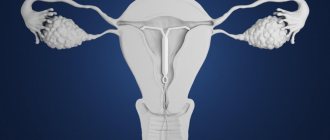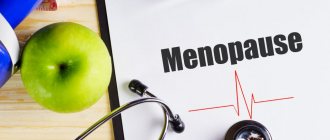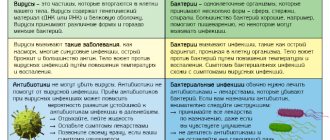Most people associate hormone replacement therapy with the female menopause. However, it is used not only in gynecological practice, and not only among women of retirement age. The method of hormone replacement therapy is actively used in men. It is especially in demand among those who are interested in building muscle mass, are involved in professional sports, and want to maintain an athletic figure.
Hormone replacement therapy: what is it and why?
In developed countries, the prescription of HRT is a common practice after the appearance of noticeable age-related changes, as well as in people whose lives are closely connected with sports. In the post-Soviet space, such therapy is still viewed with caution. This is not surprising, given the thoughtless prescription of hormone replacement drugs in the 50-60s of the 20th century. Soviet doctors prescribed them to women suffering from gynecological diseases in “horse doses”, which led to unpleasant side effects, including the appearance of unwanted hair and obesity. With the correct selection and reasonable dosage of medications, such consequences can be avoided. But the positive effect will be noticeable immediately.
According to unofficial statistics, HRT is used by more than 50% of English women, about 25% of German women and at least 10% of French women over 45 years of age, while among Russian women this figure does not exceed 1-2%. The numbers are indicative: the medical sector in the post-Soviet space is developing more slowly and lags behind in many areas. The habit of Russians to tolerate inconveniences if they do not pose a threat to life also has an effect.
Femoston is one of the options for treating symptoms in menopausal women
To understand how HRT works, you can look at the effects of a drug commonly prescribed in Europe. Femoston is a medicine containing hormones - micronized 17β-estradiol and dydrogesterone.
Femoston
There are 3 different pharmaceutical forms of the drug with different dosages, selected individually by the gynecologist.
For example, Femoston 1 mg / 10 mg is a cyclic treatment in low doses, i.e. estrogens are administered continuously, and gestagens - for 14 days. After taking them, the patient experiences bleeding. The packs contain 28 tablets, taken 1 tablet at a time without a break. Each tablet contains 1 mg of 17β-estradiol, and the last 14 tablets contain 10 mg of dydrogesterone. The drug is used if the last menstruation was less than a year before the start of treatment. This combination of hormones is usually well tolerated. Adverse reactions occur rarely. Common ones include: headache, pain in the back, stomach or chest, hypersensitivity of the mammary glands.
A continuous hormone therapy regimen is used if the last menstrual period was more than a year in menopausal women or more than 2 years before the onset of premature ovarian failure. In this case, the medicine contains 28 tablets. Each tablet contains the same ratio of 17β-estradiol and dydrogesterone. The drug is taken daily, 1 tablet without a break.
This treatment option is indicated for women suffering from symptoms of estrogen deficiency or for the prevention of osteoporosis in women at increased risk of fractures who cannot tolerate or are prohibited from taking other medications to prevent osteoporosis. The protective effect on bone depends on the dose of estrogen. Research has shown that hormones introduced during perimenopause have long-lasting protective effects on bones for many years even after discontinuation.
What dose of drugs for HRT should I choose? The general rule is that the optimal dose and duration of treatment are individualized based on the severity of symptoms and response to the prescribed treatment.
Treatment is often started with the lowest but effective dose of estrogen, i.e. preparation containing 1 mg of estradiol 17-β. If symptoms persist for approximately 2–3 months, the dose is increased. For most women, a low dose of 1 mg of estrogen is sufficient to relieve symptoms. Very low doses of estradiol 0.5 mg are effective in controlling subjective symptoms and maintaining bone mineral density in postmenopausal women.
According to the International Menopause Society, dydrogesterone, which is included in HRT drugs, is associated with a better breast cancer risk profile than synthetic progestins. But HRT in any case should not be used by women diagnosed with:
- breast cancer;
- pathology of the uterine mucosa;
- unexplained genital bleeding;
- venous thromboembolism (deep vein thrombosis, pulmonary embolism);
- thrombophilic embolism;
- arterial thrombolysis;
- acute liver disease;
- porphyria;
- allergies to the active substance.
Breast cancer
When to start hormone replacement therapy?
There are no clear recommendations. The period for prescribing special drugs depends on the severity of age-related manifestations. The imbalance of sex hormones increases gradually and becomes more noticeable after 40 years (in both women and men). Deteriorating health is often explained by the aging of the body and a bunch of medications are prescribed that do not solve the problem, while it is enough to do a special analysis to understand the cause of the changes.
In women, the following signs indicate a lack of estrogen and testosterone, and therefore the need for hormone replacement therapy:
- menstrual irregularities;
- the appearance of papillomas, dry skin and mucous membranes;
- decreased sexual desire;
- decreased self-confidence;
- development of atherosclerosis, increased blood pressure, increased cholesterol and blood sugar levels;
- inability to lose weight even on strict diets;
- laxity of the inner sides of the shoulders.
Similar symptoms are observed in men. Often these are accompanied by depressive conditions, the appearance of fat folds in the waist area, swelling of the mammary glands, cardiovascular diseases, and prostate pathologies. Hypertension, osteoporosis, diabetes, heart attack, obesity are mostly consequences of a lack of specific hormones.
The most unpleasant thing for representatives of the stronger sex is the inability to maintain their previous physical shape. In addition to deterioration in appearance, there is a drop in vitality and fatigue even with minor exertion. This is extremely painful for people accustomed to an active lifestyle and regular exercise. Therefore, it is important to follow the recommendations of experts who advise taking hormone tests twice - after turning 35-45 years old, as well as when any signs of imbalance appear. The results of the study will help make a decision about the need to start HRT or postpone it to a later period.
Pros and cons of hormone replacement therapy
Of course, HRT is not a panacea for all diseases and not a harmless “indulgence in vitamins.” In addition to the pronounced benefits, it has side effects that should not be forgotten. But if you approach the prescription of hormone replacement drugs thoughtfully, the negative consequences will be minimal, and the quality of life as a result of such therapy will improve several times. People who scare themselves and those around them with “horror stories” about hair growth, kilograms of excess weight, and cancerous lesions caused by HRT actually know nothing about it.
In order to have a good idea of what awaits a patient who has been prescribed hormonal medications or a bodybuilder who wants to improve performance in sports, it is important to clearly distinguish between the pros and cons of replacement therapy. This approach, combined with the recommendations of a competent specialist, will give the most complete picture and help you make a decision.
The benefits of hormone replacement therapy
Many endocrinologists, in particular Leonid Vroslov, candidate of medical sciences, believe that timely administration of HRT can prevent many diseases. A course of replacement medications, started at the first signs of hormonal imbalance, will prevent ischemic heart disease, diabetes mellitus, hypertension, atherosclerosis, muscle atrophy, and other pathologies associated with aging. The effectiveness of HRT in the prevention of osteoporosis has also been proven, as confirmed by Professor Marina Tarasova. Special therapy may not prolong life, but it will significantly improve its quality.
In women, taking hormonal medications is aimed at eliminating estrogen deficiency. Replacement therapy will provide relief from the painful manifestations of menopause:
- irritability, fatigue, insomnia;
- regular headaches, joint, lumbar pain;
- hot and cold flashes;
- mood instability;
- digestive disorders, urination;
- problems with memory, attention;
- increased heart rate, decreased libido, etc.
In men, drug correction of hormonal levels can be considered as an effective alternative to antidepressants. Increasing testosterone levels with the help of replacement therapy will restore their stamina, strength, sexuality, improve their appearance, allow them to achieve serious results in sports, and prevent the formation of abdominal fat deposits.
Medical research confirms that the level of “male hormone” is responsible for:
- quality of metabolism, the body's sensitivity to oxygen;
- blood sugar balance, cholesterol removal;
- support of cardio- and neurological functions;
- immune system function, muscle mass;
- stable mood, libido.
Testosterone controls a number of vital processes and affects a man’s well-being. Therefore, it is so important to prevent a significant drop in its level, which is why hormone replacement therapy is prescribed. For many patients with cardiac disorders, it helps them stop taking expensive medications to stimulate cardiac activity.
What is HRT aimed at?
In older women, hypoestrogenism causes memory loss, which affects work. And HRT helps solve the problem of deteriorating mental abilities. Due to a lack of bone mass, older people are susceptible to fractures. In women, this risk increases sharply after menopause. Trying to take tons of calcium is useless: it is not absorbed against the background of a hypoestrogenic state. If a woman has a predisposition to osteoporosis, then HRT is vital for her. Classic osteoporosis type: blonde secretary with a cup of coffee in front of the computer. This is exactly the image that is drawn for students at the department for ease of memorization. In other words, this is a woman with low body weight, she has a sedentary job, she drinks a lot of coffee and smokes.
The second type - the northern peoples (Evenks, Chukchi) - have genetically thin bones that break easily in old age. And there are also families where fractures occur in several generations among elderly and senile people. If these risk groups begin to take estrogens, their bone mass will be restored, which means that the possibility of fractures will be delayed for a considerable time. In addition to osteoporosis, older women face no less dangerous traps: coronary heart disease, myocardial infarction, hypertension.
After menopause, atherosclerosis progresses sharply. The only thing that can protect a woman in this situation is estrogens, which will slow down the development of these diseases. It has been clearly proven that with a high concentration of estrogen in the blood, the risks of Alzheimer's disease and intestinal cancer are significantly reduced. HRT solves the problems of urinary incontinence, vaginal dryness, which makes sexual life difficult, even making it impossible. But most of all, a woman suffers from autonomic dysfunction, from hot flashes, when the face turns crimson-red in a second, from irritability, and night sweats. These menopausal symptoms make being in society uncomfortable, even unbearable. There are women who suffer from severe menopause for 6–10 years. And all their suffering is relieved by HRT.
Sports and hormones
For professional athletes, the use of HRT is not aimed at correcting well-being, but at improving physical fitness. In sports, preference is given to a combination of hormone replacement therapy with anabolic drugs, which can be combined in different ways to achieve better results. However, regardless of the purpose of their use, it is important to monitor your health status. With reasonable consumption, testosterone will only bring benefits: it will increase the volume of muscle tissue, reduce body fat, provide a surge of strength, rejuvenate the body, and increase achievements in sports.
However, you should not thoughtlessly increase the dosage of the drug, so that in the future you do not have to reduce its level with other medications. During administration, you need to constantly monitor the lipid profile, general clinical blood parameters, and the content of estradiol and prolactin in it. Before prescribing the course, you should undergo an examination and take tests.
What is menopause? Isn't this a disease?
The content of the article
Menopause is a physiological period of life for all women, which occurs on average at the age of 51.3 years. This is a major shock to the body, where decreased production of estrogen and progesterone can lead to a variety of symptoms that impair quality of life.
Phases of menopause
Female sex hormones, estrogens and progesterone, are mainly produced by the ovarian follicles. The maximum number of follicles is located in the ovaries of the fetus, still in the womb. At birth, their number is already smaller, and subsequently constantly decreases.
Around the age of 50, ovarian function gradually ceases, and the balance and synthesis of secreted hormones is disrupted. Ovulation in the ovaries occurs less frequently or disappears completely, which means that the corpus luteum, which produces progesterone, is no longer formed, reducing its levels in the body. Estrogen is still being produced, resulting in a relative excess of estrogen. The consequence of the process is an irregular menstrual cycle and dysfunctional bleeding.
Early menopause symptoms often begin during premenopause. These are vasomotor symptoms such as:
- tides;
- sweating (especially at night);
- heartbeat;
- headache;
- dizziness;
- noise in ears;
- chills;
- bloating;
- changes in blood pressure.
Headache
Psychological symptoms are also possible:
- depressed mood;
- anxiety;
- increased irritability;
- mood swings;
- insomnia or drowsiness;
- lack of energy;
- decreased libido.
During this period, a woman often does not connect the above psychological complaints with the impending menopause and therefore turns not to a gynecologist, but to a therapist. The doctor prescribes sedatives or antidepressants. This is not correct: if you have symptoms of menopause, you need to go to a gynecological clinic and treat hormonal problems, and not their consequences.
In 2013, the British Menopause Society recommended that doctors provide health and lifestyle counseling to all women over 50 years of age. And also for each patient to draw up an individual treatment plan during menopause and beyond, thus ensuring a longer and healthier life. It is emphasized that the greatest opportunity to prevent negative symptoms is early menopause.
Guidelines from the British Menopause Society state that even short-term use of hormones using HRT at the beginning of menopause improves mood and relieves depression. In this case, the so-called domino effect is triggered due to the disappearance of vegetative symptoms and a direct antidepressant effect. Psychiatric counseling is recommended for women suffering from severe depression or when there is no improvement after hormonal treatment.
Over the years, follicle reserves are depleted and less and less estrogen is produced, so based on feedback, the pituitary gland secretes even more follicle-stimulating hormones (FSH) and luteinizing hormones (LH). Even a stimulated ovary stops secreting sex hormones (estrogen and progesterone) - menopause occurs.
On average, 3-5 years after menopause, intermediate symptoms include urogenital disorders:
- vaginal dryness;
- itching;
- painful sexual intercourse;
- vaginal descent;
- frequent and painful urination;
- recurrent urinary tract infections;
- urinary incontinence.
Frequent and painful urination
Atrophy of connective tissue and impaired collagen synthesis lead to hair loss, nail fractures, thinning and dry skin, pain in bones and joints. These signs relate to symptoms of late menopause, osteoporosis, cardiovascular diseases, senile dementia (dementia).
Each woman experiences this period individually. Since the main cause of these symptoms is a lack of sex hormones, the most effective treatment to improve a woman's quality of life is hormone treatment. In gynecology, a combination of estrogen (E) and estrogen/progestin (E/P) is used to reduce the symptoms of estrogen deficiency.
Is hormone replacement therapy harmful?
Like any drug treatment, HRT has side effects. But they are not as terrible as hormonephobes try to imagine. For men, the main fear that keeps them from adjusting their testosterone levels is the fear of developing prostate cancer. However, most studies refute the connection between this disease and HRT.
As for women, the risk of malignant tumors of the breast and pelvic organs does exist. But it increases only with long-term use of hormone replacement drugs - with continuous therapy for over 15 years. The risk of any complications increases in heavy smokers and overweight patients.
The disadvantage of hormonal treatment is a significant deterioration in the quality of life after their withdrawal. The body, accustomed to the supply of active substances from the outside, is rarely able to return to their natural production.
Contraindications for hormone replacement therapy
Before prescribing medications, the doctor will definitely refer the patient for examination. It is necessary to undergo an ultrasound of the reproductive organs (for women also a mammogram), check the blood for clotting, determine the glucose level, find out the cause of excess weight (if any), and take tests for basic hormones. It is not necessary to examine the liver (if there are no problems on its part), but it is advisable. After treatment is prescribed, it is necessary to check your health once a year.
Testosterone hormone replacement therapy is not used for benign and malignant prostate tumors, breast cancer, neoplasms in the pituitary gland, and some blood diseases. Lung pathologies and heavy smoking are considered relative contraindications to the course.
In women, hormone replacement therapy is not used for malignant tumors in the reproductive organs or mammary gland, or vaginal bleeding of unknown etiology.
General contraindications are:
- thromboembolic complications;
- liver pathologies;
- severe forms of diabetes mellitus;
- disorders of fat metabolism.
Risks of using HRT
There are contraindications to HRT, and complications with their use exist. Estrogens increase the risk of endometrial cancer if taken without progestins. To prevent this, a second component, gestagen, is added to hormone replacement therapy drugs. The patient is prescribed drugs with pure estrogens only if the uterus is removed.
Very severe obesity, in which there is increased blood clotting, operated breast cancer, renal failure - all these are good reasons for refusing HRT. But chronic pyelonephritis does not interfere with HRT. As for hypertension, in some forms HRT can form the basis for a woman’s treatment, but in others it cannot be used. Therefore, the doctor must conduct a comprehensive examination and only after that decide on HRT.
How do estrogens affect blood vessels?
All arterial vessels are lined from the inside with a thin layer of endothelial cells. Their task is to expand or narrow the vessel in a timely manner, as well as protect it from cholesterol and blood clots. The endothelium depends on estrogens: if it is suddenly damaged, estrogens help it recover. When there are few of them, endothelial cells do not have time to recover. The vessels “age”: they lose elasticity, become overgrown with cholesterol plaques, and narrow. And since the vessels cover all organs, it turns out that estrogens affect the functioning of the heart, kidneys, liver, lungs... Estrogen receptors are found in all cells of a woman’s body.
Principles of hormone replacement therapy
HRT is a whole complex of measures, the purpose of which is to restore unbalanced body functions. Therefore, hormone replacement therapy is combined with lifestyle correction, normalization of weight, and psycho-emotional state. It is very important to establish proper nutrition, as it directly affects the production of active substances. It is recommended to include more vegetables and fruits, lean meat, fish, vegetable oil, nuts, and seeds in the menu. You need to move a lot, exercise regularly, and stick to a daily routine.
Hormone dosages will vary at different ages. For example, women before menopause are prescribed drugs with a higher content of active substances, gradually reducing their level as they age.
After 65 years of age, hormonal treatment is usually not prescribed because it will no longer be effective. However, if the correction is started on time, it can be continued for as long as desired. If there are no contraindications. The main principle of replacement therapy speaks for itself: “the last pill is on the last day of life.”
When is HRT prescribed?
For different ages, the dosages of hormones vary: there are drugs for women under 45 years old, from 45 to 50, from 51 and older. During perimenopause (before menopause), high doses are prescribed, then they are gradually reduced. Unfortunately, you may be late to jump into the last carriage of the departing train. If, for example, atherosclerosis has already developed, then it has managed to close the estrogen receptors, and no dose of the hormone will make them act. That is why it is so important to start taking sex hormones as early as possible, even if the menopausal syndrome is not yet pressing: you do not suffer from hot flashes, bouts of sweating, insomnia, irritability, hypertension.
There is a term “therapeutic window”. After 65 years, hormone therapy, as a rule, is not prescribed: sex hormones will no longer be able to properly engage in the functioning of the human mechanism. But if HRT is started on time, then it can be continued as long as the heart beats. If there are no contraindications. You need to understand that HRT is not an elixir of immortality; it will not give you extra years of life, but it will greatly improve your quality of life.
Will herbs help with menopause?
Recently, phytohormones have been actively promoted as the best and safest remedy against menopausal syndrome. And many gynecologists advise drinking dietary supplements with phytoestrogens during perimenopause. Plant hormone-like substances really work and help cope with hot flashes, insomnia, and irritability. But few people know that against their background, endometrial hyperplasia (proliferation of the inner layer of the uterus) is more common. This property of estrogen and estrogen-like substances in standard HRT is compensated by gestagen - it does not allow the endometrium to grow. Exclusively estrogen (without gestagen) is prescribed to women if the uterus has been removed. True, recent studies show a beneficial effect of gestagen on both the central nervous system and the mammary glands - it prevents the development of tumors. Unfortunately, unlike real estrogens, phytoanalogues have no effect on metabolism, calcium absorption, or the condition of blood vessels. Plant hormones are a compromise and salvation for those for whom real HRT is contraindicated. But doctor's supervision and regular examinations are also necessary.
Hormones and beauty
Any hormonal changes affect the condition of the skin. Cosmetic procedures themselves are effective only up to 40 years of age. After this, injections of hyaluronic acid, botulinum toxin, peelings are only half the battle; first of all, you need to normalize the hormonal status. When a circumferential lift is performed, excess tissue is cut off, but the quality of the skin remains the same. If there is no estrogen, the skin will be dry, dehydrated, without the proper amount of collagen and elastin. Wrinkles will appear again and again. If you replace the level of estrogen with the help of HRT, the emerging wrinkles will not disappear, but will stop getting deeper. And the weight will not increase.







